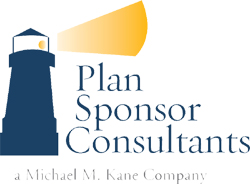Ongoing communication with your retirement plan participants can often help boost contributions and retirement readiness. While much of this type of messaging is optional, there are some instances when participant notifications are a necessity and cannot be overlooked.
To keep your plan in compliance, make sure you are aware of all communication requirements. The following are some of the instances requiring participant notification as outlined by the Internal Revenue Service in Retirement Plan Participant Notices (and subsequent pages). Required notices may vary by Plan type (401(k), 403(b), etc.), so become familiar with the notices required for your specific plan.
Plan Events
- Amendments to the plan or Summary Plan Description (SPD) – Give participants a Summary of Material Modifications (SMM) that provides in “plain language” information on vesting, participant eligibility and benefits, instances that could result in plan disqualification or denial, plan dates, and benefit claim procedures.
- Summary Annual Report (SAR) – At the end of each year, provide participants a summary of Form 5500 explaining plan administrative expenses, benefits paid to participants, value of plan assets, compliance with minimum fund standards, and information on how to receive a full report.
- Safe Harbor – Send an annual notice to all eligible employees when a plan is an IRC 401(k) or a safe harbor plan.
- 204(h) Notice – Provide participants with a notice when benefit accruals will be lowered by a plan amendment.
- IRS qualified status determination filings for new, amended or terminated plans – participants must be notified and allowed to comment.
- Sarbanes-Oxley Act (SOA) – send a notice to participants and beneficiaries at least 30 days before a blackout period (which results when investments or other transactions are suspended or restricted for a period of more than three days).
- 404a-5 Participant Disclosure – Send the 404a-5 Notice annually to keep participants informed about the plan and investment-related information and fees associated with the retirement account.
- Participant Statements – Depending on your plan design, send benefit statements to your participants either quarterly or annually.
Participant Events
- Upon eligibility – Once an employee is eligible to join your retirement plan they should receive an enrollment package and all accompanying new participant documents.
- Benefits statement – Provide participants with an annual statement showing accrued and vested benefits.
- 402(f) Notice – Given to employees (or former employees) when rollover distributions will be made. The notice explains the rules, options and tax implications.
- No longer working – When a participant is no longer working, due to retirement or has quit, the employee must receive a description of their retirement benefits and information on how to access the funds.
- Benefit suspension – When participants work beyond their retirement, and benefits are suspended, the employee must be notified and sent information explaining the reasons for the suspension and a process for appeal.
These are just a few of the important notifications. While your plan administrator is responsible for sending many of these documents, as a retirement plan sponsor, it’s still important to understand what needs to be sent and when.


